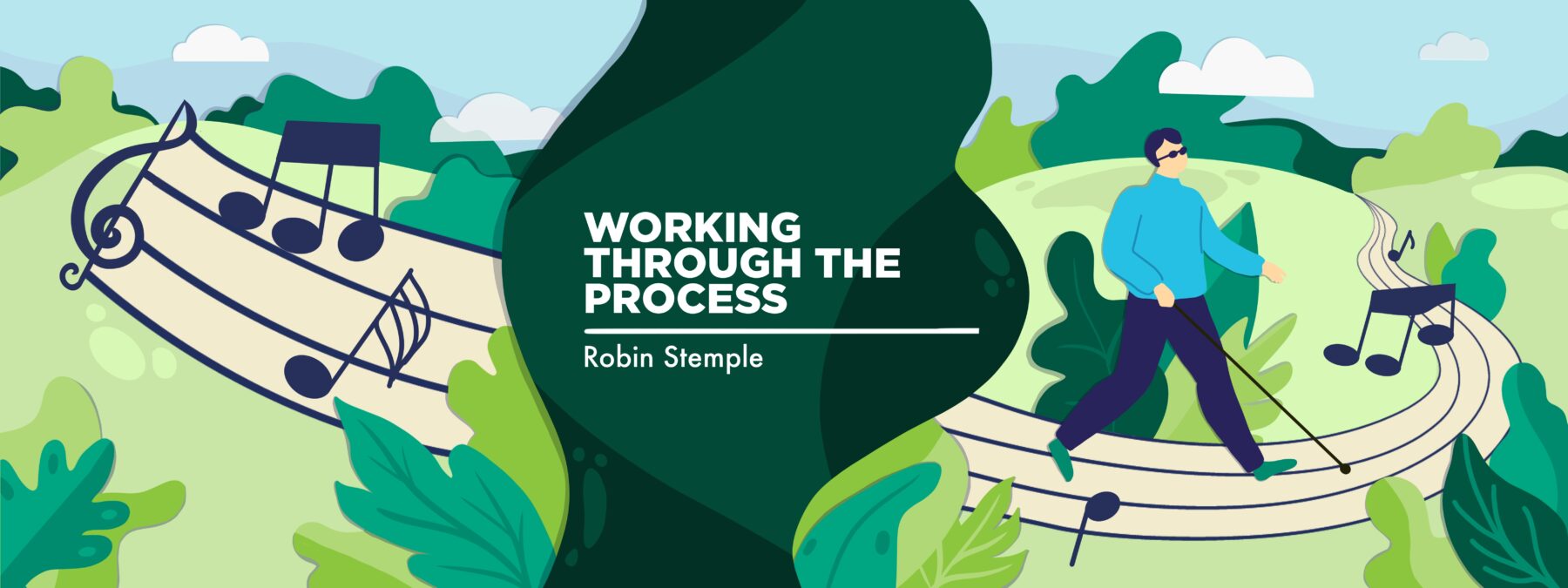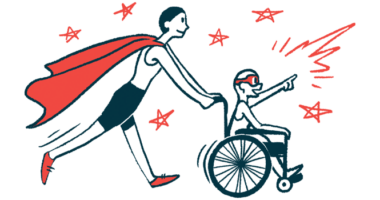Weighing the pros and cons of occupational and physical therapy
A columnist wonders whether the potential benefits are worth the pain

In my last column, I wrote about the increasing difficulties I’m having safely navigating my home using the “furniture surfing” technique. I wondered whether it was time that I break out the walker and give it another try. I also mentioned my plans to contact my doctor to discuss starting physical and occupational therapy.
A year ago, I wrote a similar column about whether it was time to start physical therapy. At the time, my family was urging me to try it because I was now living in the “big city of Pittsburgh,” where therapists surely were more knowledgeable than their colleagues “in the middle of nowhere,” where I used to live.
Facioscapulohumeral muscular dystrophy (FSHD) is a pretty rare condition, but perhaps some therapists in Pittsburgh have worked with someone who has the condition. Last year, I gave this possibility a lot of thought before rejecting it, opting instead to up my game with additional exercise at home.
Based on those past experiences with physical therapy, I thought my own practice of water therapy might be a good alternative. But while that therapy is probably available somewhere in Pittsburgh, it means obstacles for me, a blind guy in a wheelchair. I’d need to find transportation, navigate in and out of an unfamiliar facility, undress, exercise, shower, dress, and wait for transportation back home, which just sounded exhausting. My schedule wasn’t full at the time, but still, there were other things I wanted to do with my time and energy.
But last month I fell, which was a wake-up call for me. My home exercise routine may have slowed down my disease progression, but it hasn’t stopped it. I admit there’s a part of me that, after 52 years of struggle, simply wants to stop fighting FSHD, especially since therapy is likely to cause pain and will lead to only minimal improvement.
But I’ve reached a point where my instability is scaring me enough to pursue any type of therapy that might keep me on my feet a little longer. Currently, anytime I’m on my feet, there’s a real possibility that I’ll fall.
I’m glad my wife, Wendy, and daughter, Jill, are living with me, and I’m grateful for their support. In typical circumstances, they could work together to help me up after a fall. However, Wendy recently had surgery, so if I fell, we’d have to call someone to come over and help me get up.
A better solution
I’m taking action to do what I can to fight off the effects of FSHD. After consulting with my primary care physician, I decided to start some in-home physical and occupational therapy, which eliminates some of my concerns.
A physical therapist will arrive later today to get things started. Of course, it isn’t water therapy, but I’m hoping we can come up with some exercises to help me rebuild some muscle strength and improve my balance. I can’t say I’m incredibly hopeful, but I owe it to myself and my family to try.
In my last column, I discussed the challenges I’ve had using a walker. I had difficulty staying oriented to my environment, which was hard on the walls and the furniture.
The first occupational therapist who contacted me had no experience working with someone who was totally blind. I politely told them that I wanted to work with someone who had such experience.
Fortunately, Blind and Vision Rehabilitation Services of Pittsburgh, a nonprofit agency, has an occupational therapist who has experience working with blind people who have mobility challenges. I’m hoping to have them start an evaluation sometime next week.
And so we begin the rehabilitation process again. Wish me luck! If you’re a praying person, I’d appreciate those, too.
Note: Muscular Dystrophy News Today is strictly a news and information website about the disease. It does not provide medical advice, diagnosis, or treatment. This content is not intended to be a substitute for professional medical advice, diagnosis, or treatment. Always seek the advice of your physician or another qualified health provider with any questions you may have regarding a medical condition. Never disregard professional medical advice or delay in seeking it because of something you have read on this website. The opinions expressed in this column are not those of Muscular Dystrophy News or its parent company, Bionews, and are intended to spark discussion about issues pertaining to muscular dystrophy.








Dolores Funke
Rob,
I have a lot of confidence that a good OT and a good PT can help you. I have FSHD and I've worked with several rehabilitation therapists in the Buffalo, NY area. They have helped me greatly with strength, balance and range of motion. I'm not blind, but I know they have worked with some severely, multiply-disabled people to great benefit.
Good luck, and I'll be praying for you!
Dolores
Robin Stemple
Thanks for those prayers, Dolores! My therapists seem pretty good so far. I've only done a couple sessions, though. We'll see. I want to do OT through our local blindness organization, which offers OT. However, the agency I'm working with for PT says they can't work with me during the same time period the blindness org would be working with me, so it'll be PT for a month, then do the OT, possibly going back for more PT when the OT thing is complete. Really don't like the way our health care system is put together, but it's the only system we have, so I'll work with it! Thanks, again! - Rob
Robi Carlino
Thanks for writing for us, Rob. Please count on my prayers as you navigate your PT and OT.
Blessings to you, Wendy and Jill.
xo+
Robin Stemple
Thank you, Robin. I deeply appreciate your prayers. I hope you're hanging in there with your own struggle with FSHD. Take care and GOD bless you! - Rob
Wayne Mejia
Hi Rob,
I encourage you to keep fighting the fight! My daughter encouraged me to start PT earlier this year....I finally retired from work and had no lack of time excuse. The PT has been very helpful to me; and now I''m walking further and stronger. The biggest issue for me is my core strength. And the PT has helped me address that. I'm on vacation right now, and had dreaded this particular vacation as I knew we'd be walking a lot. But thanks, to a great extent, to the PT, I've been able to hang with my group. Yesterday and the day before, we walked 7000 steps. I'll be 69 this year. And, I'm doing everything I can to maintain what strenght I have left. My commitment, now that I'm retired, is 1 hour of floor excercises in the morning, and 2 hours in the gym, 4-5 days a week. Its not easy and I'm always sore. But, I fear not doing it will leave me debilitated. Best of luck to you!!!
Wayne
Robin Stemple
Thanks for your encouraging response, Wayne. I'm just a little younger than you, at 66, but it sounds like I'm a little ahead of you in the FSHD progression. I had to stop trying to keep up with the family on vacations , perhaps a decade ago. I am doing the exercises my PT wants to me to do on my bed. The only time I'm on the floor these days is when I fall. I can't get off the floor without a lot of assistance. You're right on the money with core strength. If I can regain some of that I'm hopeful to be able to keep walking at least around the house. Still, it pays to be hopeful. One of my goals is to be able to get up from the floor using something like a chouch or chair. Anyway, enjoy that vacation! Good for you that you keep going! - Rob
Helen Cave
Hi Rob,
From experience, I highly recommend both physio and OT. Almost ten years ago, while I was driving, a postal delivery vehicle hit my car. The car was a write off and I had a lot of soft tissue injury and pain. Eventually, following a lot of physio (and some water therapy) the injuries mostly healed. However, that accident also resulted in an increase in my FSHD progression. For 9 1/2 years I used SideStix (arm crutches) but a year ago, my balance & gait & shoulders were getting worse and I purchased a EZ fold rollator. I feel way more stabile using it. (I'm also in the middle of getting a wheelchair for distances and slopes).
After the insurance settlement (from accident) I didn't follow up with physio for awhile and then felt the need to do so. I asked around hoping to find a physio who was familiar with FSHD. Someone suggested I look for a neuromuscular physiotherapist & recommended a neuromuscular clinic that had recently opened in our location. The physio I got hadn't heard of FSHD but had lots of related experience and was open to reading / researching FSHD. She was super. Recently she has joined a team that provides in home physiotherapy or will meet you at a pool or park to do therapy.
Before I met her, I was having difficulty rolling over in bed or getting up off the floor. She had me demonstrate and then showed me techniques / steps to manage both situations & included those steps as part of my to-do exercises! I was surprised to experience actual improvements.
We've had an occupational therapist evaluate both myself and my husband in our home setting. I find OT's to be super practical in their suggestions and recommendations. Plus they are a great source of info on where to find aids and products that can make our lives easier & safer!
Have you considered a chair lift for your inside stairs? I know someone (who has FSHD) who purchased two walkers and keeps one on main floor and one on upper floor so there's a walker available at each level as she goes up and down the stairs using the chair lift.
We downsized to a one level apartment but previously in our townhouse, I found it very helpful to have stair railings on both sides of the stairwell. Mind you, stairs and me and FSHD are becoming more of a challenge. I can only do stairs now by going up sideways hanging tight onto the railing and basically only do it at family member homes who have shallow deep stairs. Thankfully some of our adult children (plus one granddaughter) don't have stairs).
Thanks for your articles! I enjoy reading them. Blessings and prayers to you & your family!
Helen
Robin Stemple
Hello, Helen. I'm right there with you. My car crash was 34 years ago. I eventually recovered from the accident damage, for the most part. However, the atrophy from laying in bed for 2 months really made a difference in the FSHD progression. We're on the same wave length. I moved into a house with stairs, so we have the stair lift already. I've been a wheelchair user for distances for a good while, but within the last couple years, I'm in the wheelchair when I'm out of the house. Most likely I'm going to use a walker in the house moving forward. Just trying out how to protect the walls/door frames and stay oriented as a blind guy. I'm feeling a little stronger since starting PT and I have an OT coming later in May to help figure out the walker, etc. Anyway, thanks for reading my stuff. I deeply appreciate your thoughts, suggestions and prayers! - Rob